The Intriguing world of the French clay pipe
Author:
Don Duco
Publication Year:
1999
Journal:
Pipe, the worldwide pipe smoke's magazine
Description:
General article on French figural clay tobacco pipes with a focus on Napoleontic subjects.
Long before the briar pipe with its standard models such as billiards, apple and Dublin became popular, the clay pipe had a much greater variation in shapes. In the nineteenth century, French pipe factories were famous in Europe for their imaginatively designed products, but in the style of the Directoire and Deuxième Empire: lavishly decorated, sculpted and still colored with enamel.
Sober start
Just as the French owe much to Napoleon, they also owe the pipe industry to him. To benefit national industry, Napoleon Bonaparte closed the borders to foreign goods around 1800. Thus, the beloved Dutch clay pipe - or Gouda pipe - became a banned article. Long clay pipes from the Netherlands were imported into France for more than a century. It is surprising that the pipe clay, the raw material for the white pipes, was transported to the Netherlands from Northern France and South-East Belgium. It was therefore a logical step to establish its own French pipe industry on the clay fields in the Maas region.

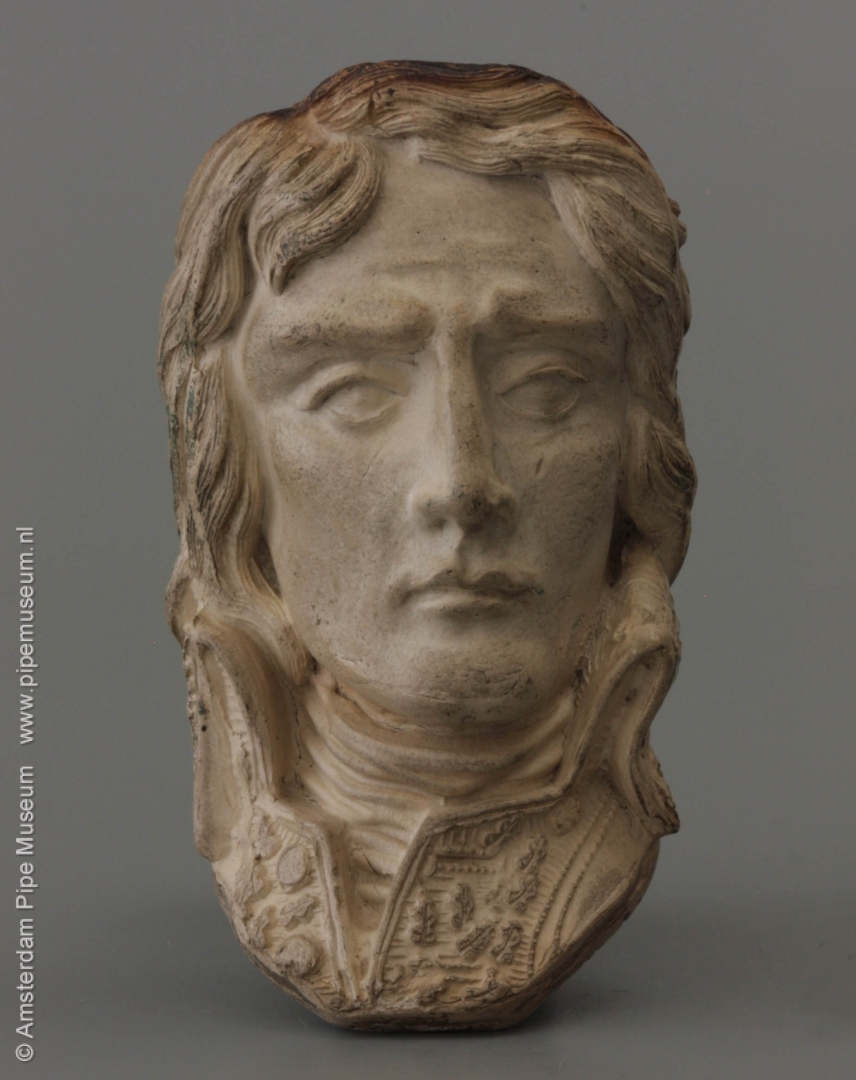
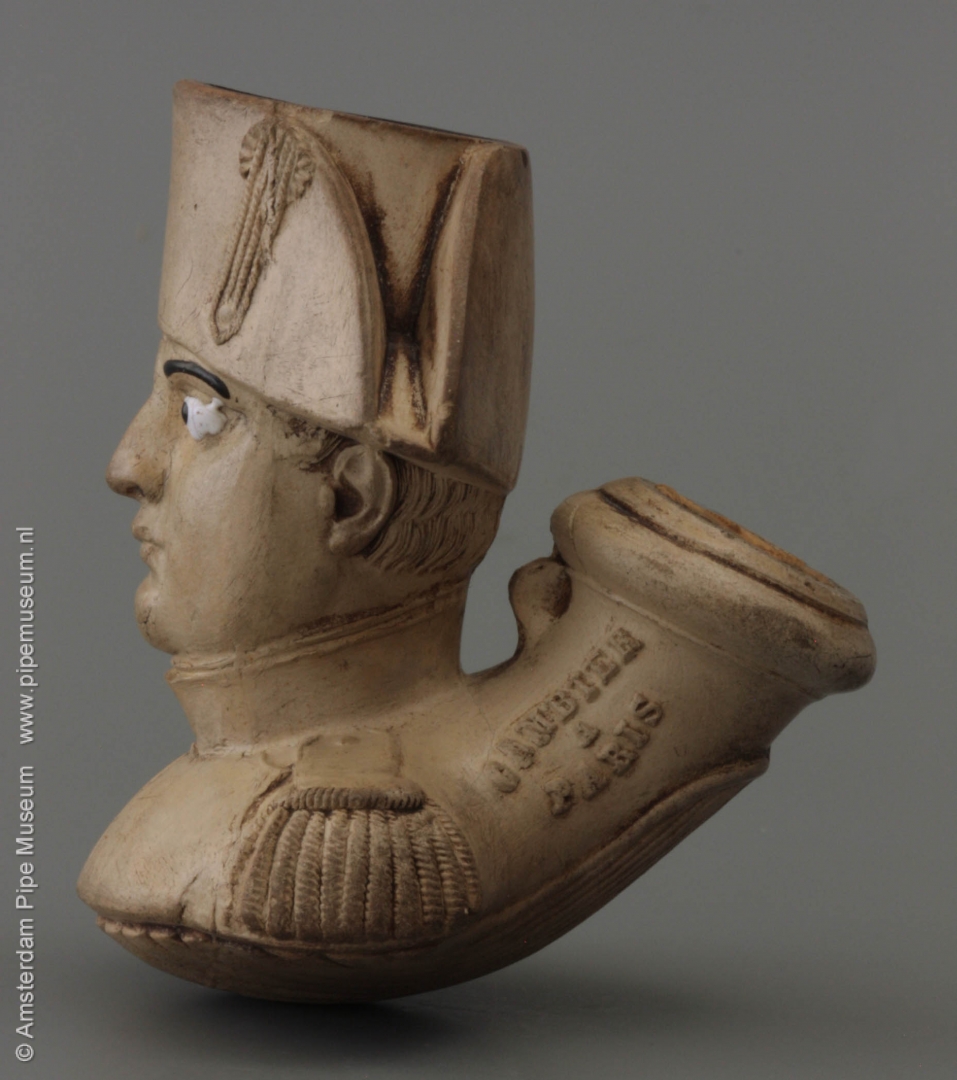
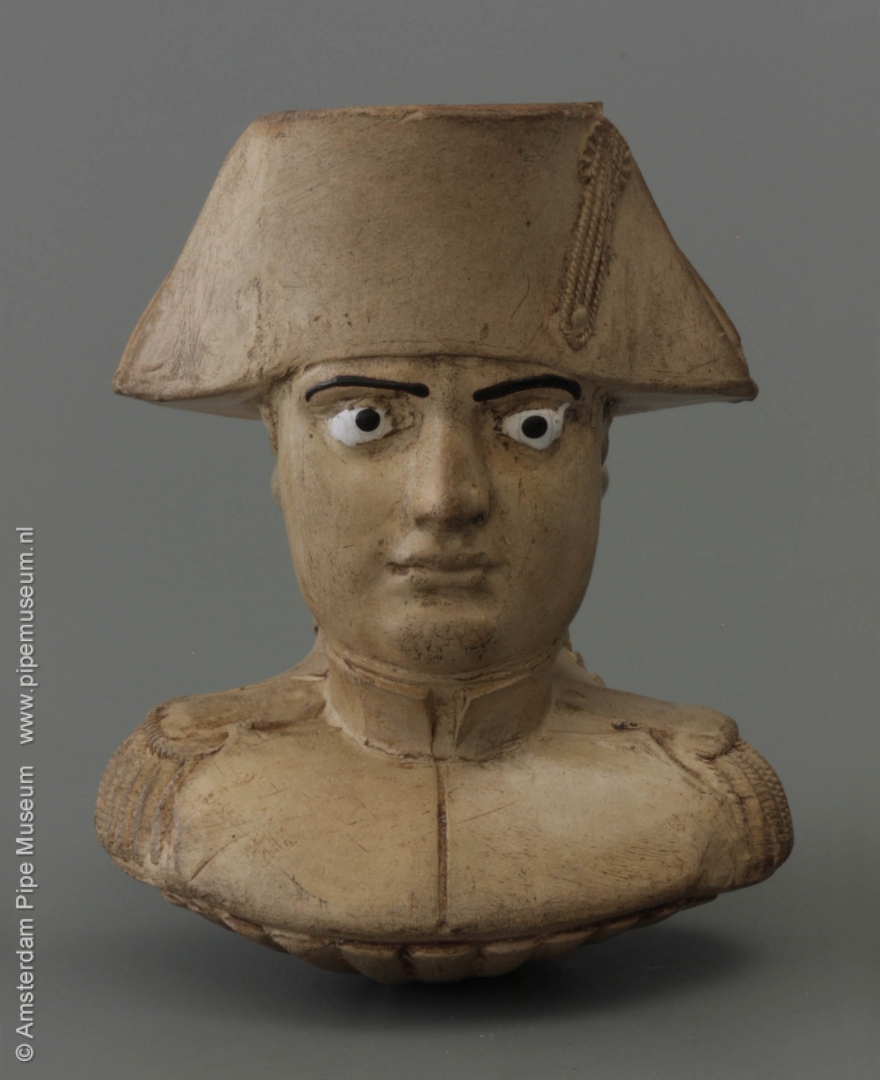
Making the long pipes à la façon hollandaise did not go well for the French. The secret of the slender, thin stems rests on a sophisticated clay mixture, together with experience and craftsmanship. But the French fantasy went much further than the Dutch common sense, which could leave a successful pipe model unchanged for a century. The oval head of the 'hollandaise' was playfully decorated with relief decorations and painting enamel.
Because the pipe bowl became heavier due to the design, the stem was too fragile. This resulted in the stub stemmed pipe: a pipe bowl with a short, thick stem, reinforced with a sleeve in which a stem of wood or reed could be clamped.
The pipe bowl becomes a face
The stub stemmed pipe was a real breakthrough for the French pipe. Sculptors lived out their imaginations in making small sculptures: faces, animals, fruits and so on. A brass mold was cast from this in the pipe factory, which served as a mold for pressing pipes. The white pipe clay has such a fine structure that the relief of the shape is adopted down to the smallest details. In order to release the three-dimensional shape of the pipe from the mold, this mold often had to consist of three parts, which fit together in an artful way.
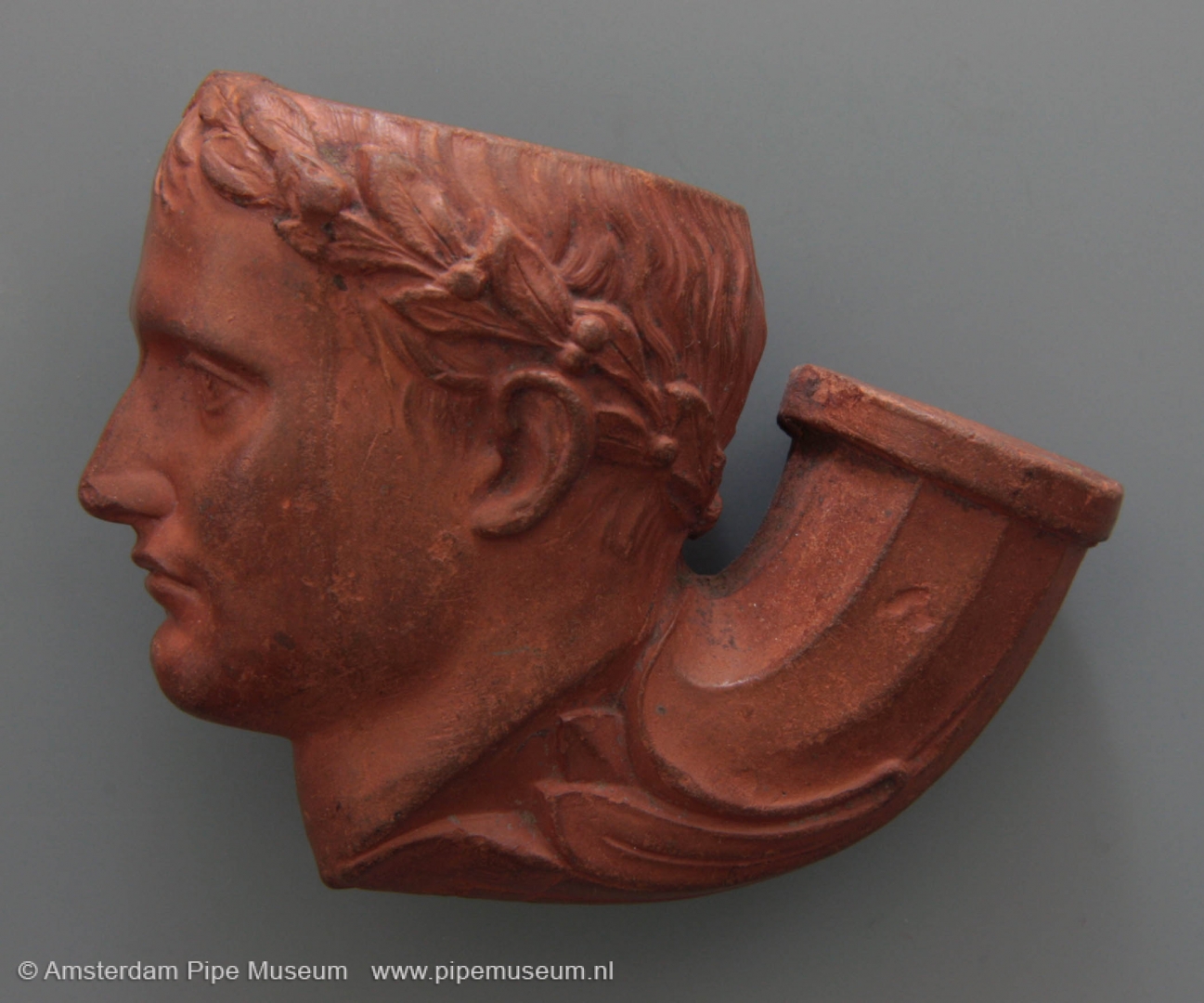
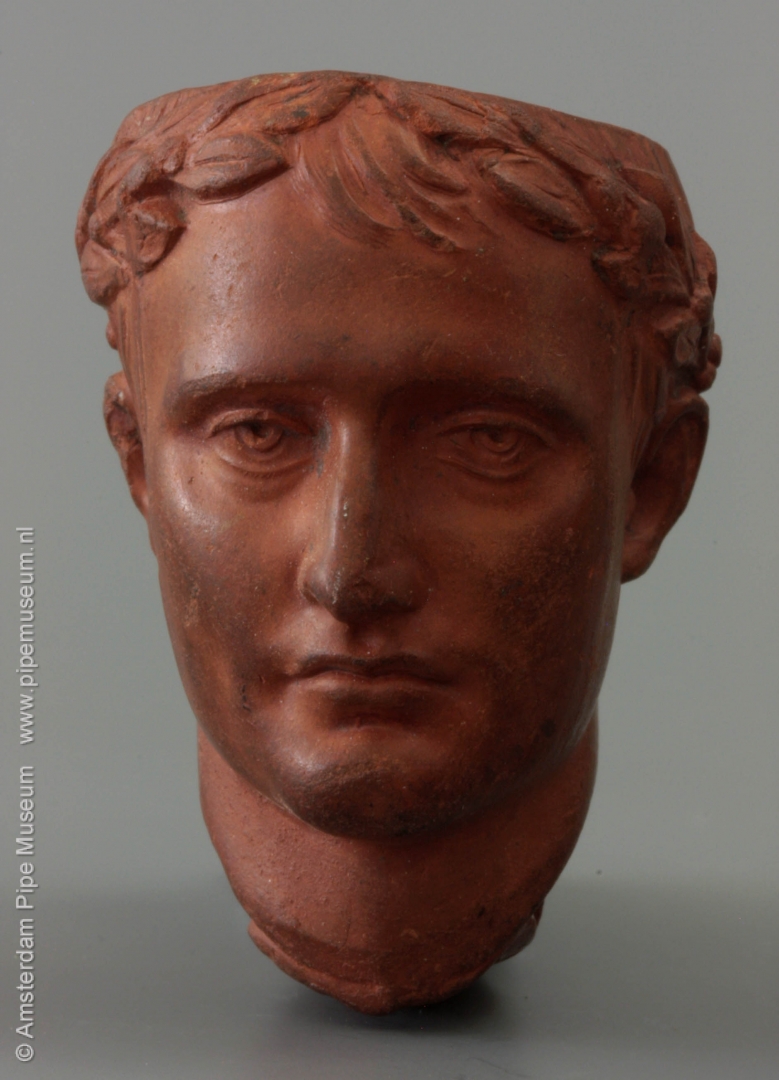
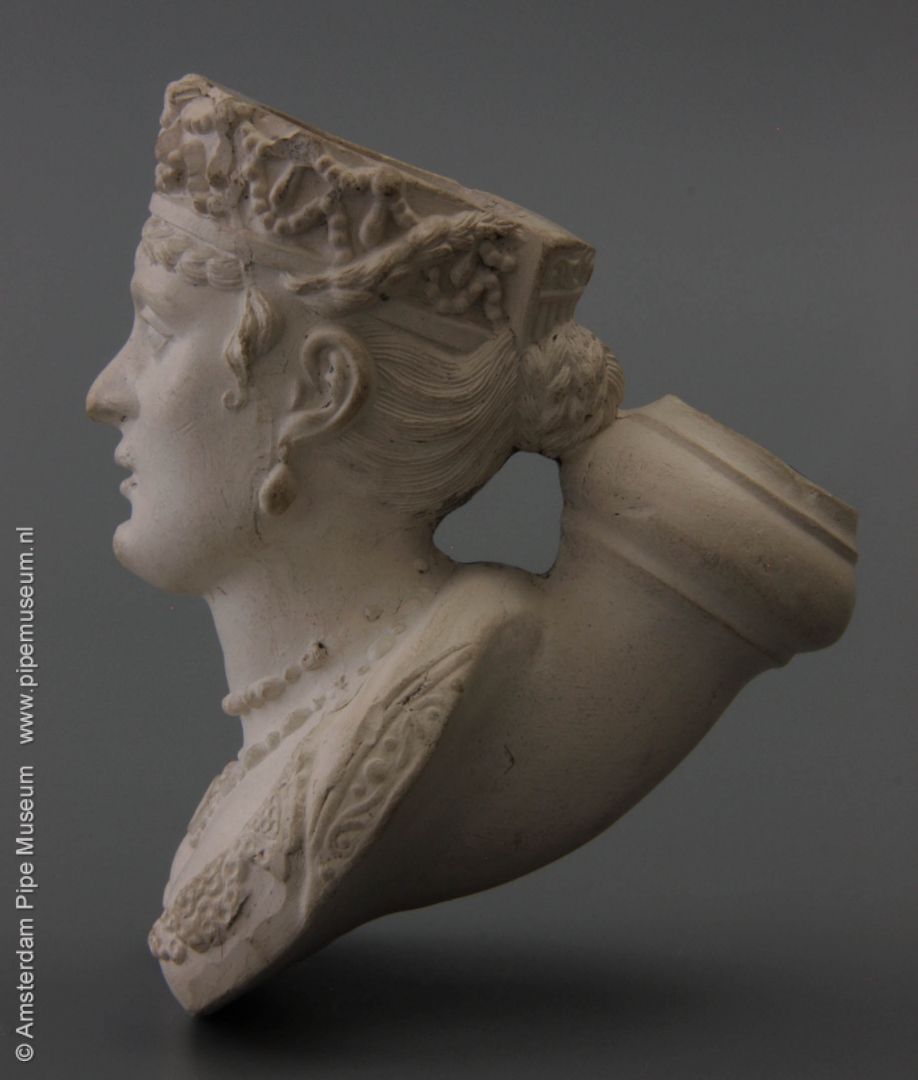
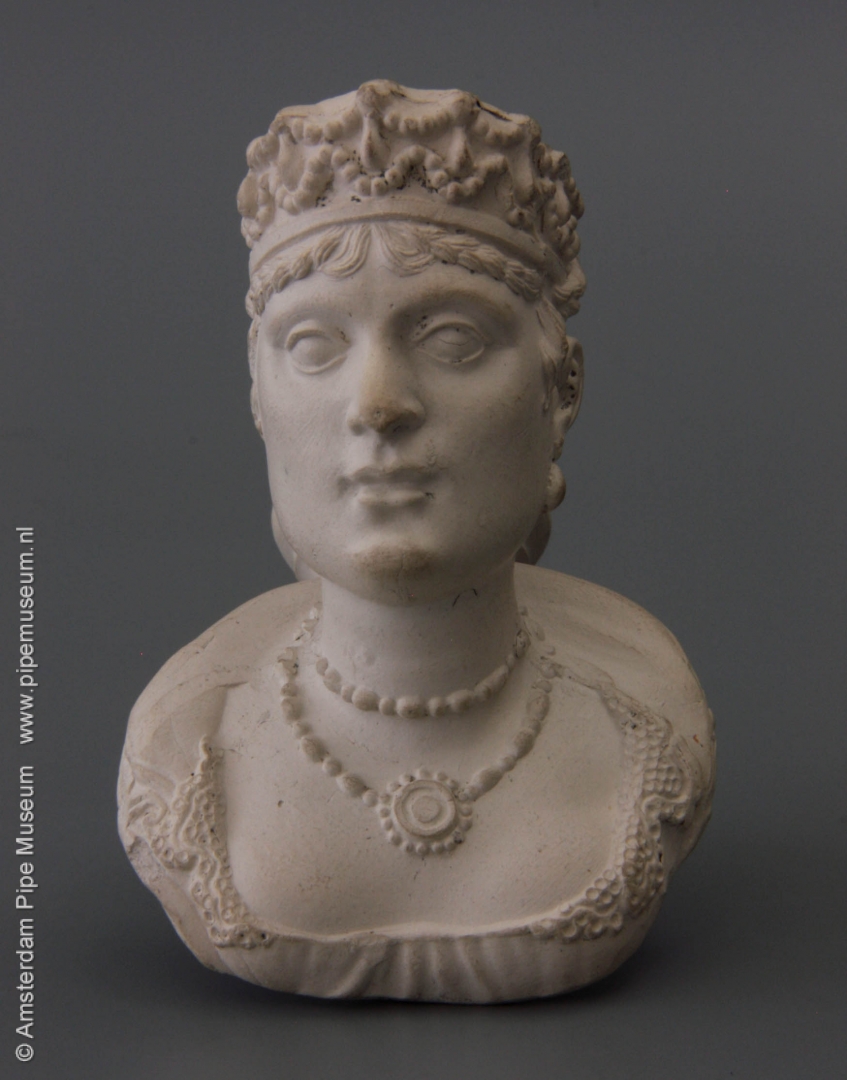
Romantic nineteenth-century smokers were fond of history's heroes and novel characters. Knights and castle women were depicted in the pipe bowl. Exotic types were also very popular: emirs, Turks and Zoeaven with wild beards and colorful turbans. But French culture is most beautifully reflected in the pipes with the portrait of famous contemporaries.
Napoleon in the pipe
The most famous Frenchman is and remains Napoleon Bonaparte. Not only in his own time around 1800, but even fifty years later, at the time of his namesake Napoleon III, he enjoyed unprecedented popularity. The pipe on which he is depicted as a young man is a copy of a famous painting by Géricault. The young general looks over his troops with determination (Fig. 1). Later, the two-sided stitch across his head becomes Napoleon's signature, which we can of course also find in the pipes (Fig. 2). Less specific is the portrait with the imperial laurel wreath (Fig. 3). By choosing such a pipe, the smoker could express his preference for the Napoleonic party. For the pipe smoker who preferred to take a woman in the hand, the portrait of Empress Joséphine was also marketed (Fig. 4). With her austere gaze and hair up with tiaras, she misses the sensual aura that the more popular images often have.
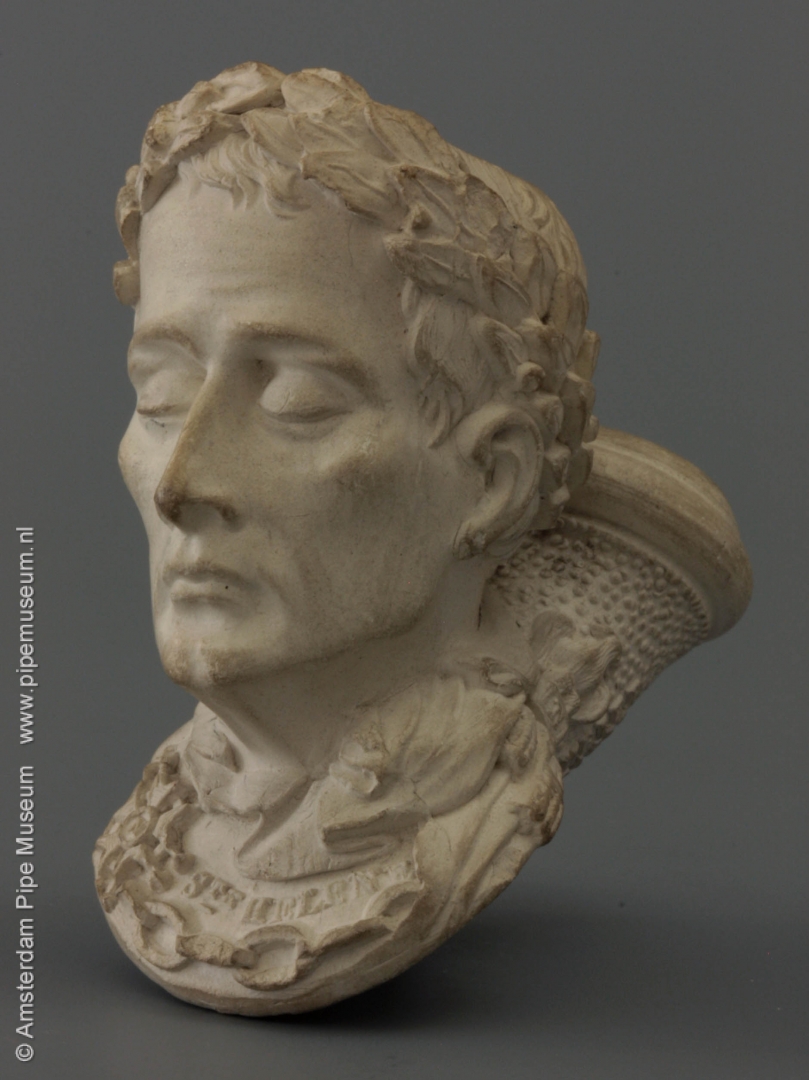
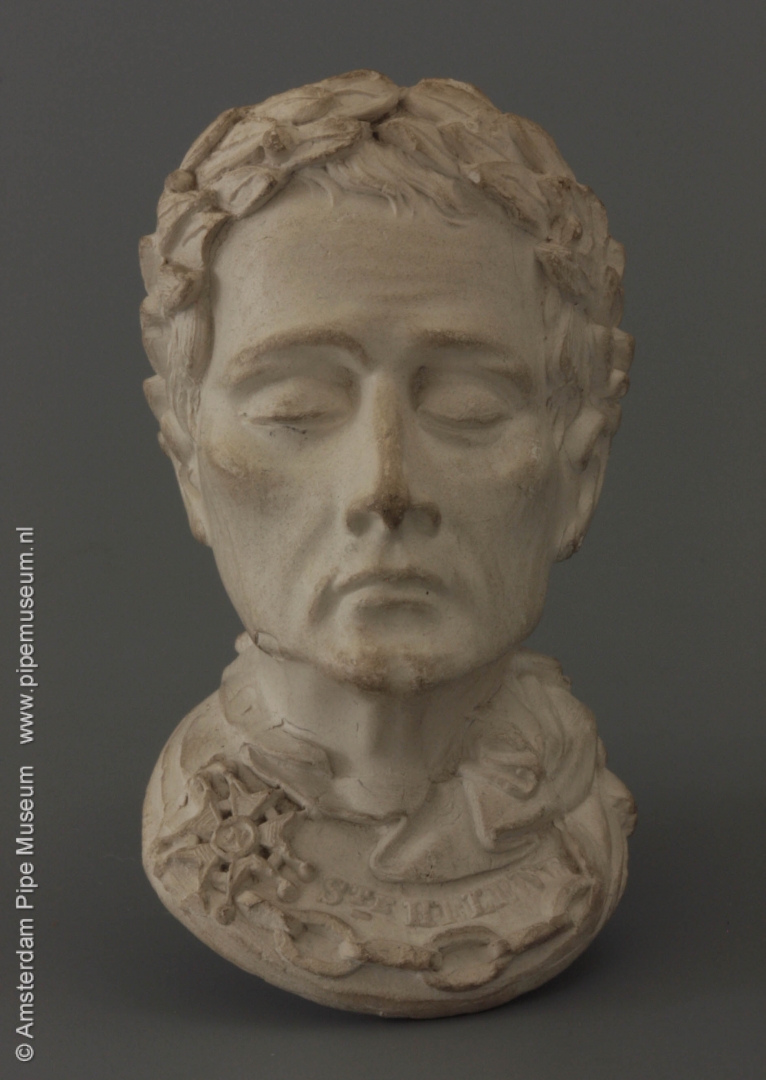
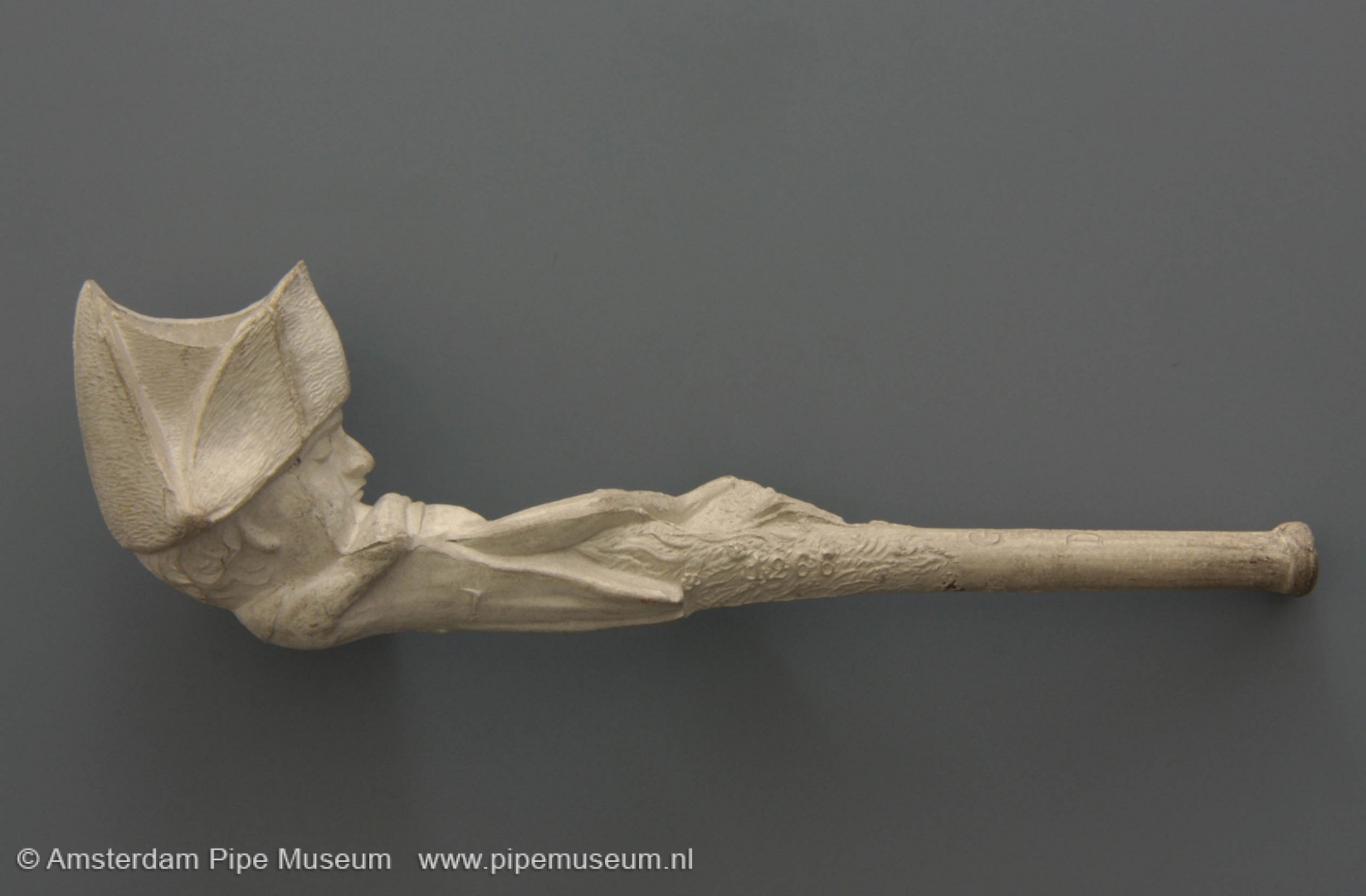
When in 1848 the remains of Napoleon were transferred with great display from St. Hélène to Paris, the pipe makers took advantage of this again. The death portrait of the emperor, which was depicted on all kinds of souvenir items, was the inspiration for a special tobacco pipe (Fig. 5). Significantly simpler is the stalk, which goes by the name of la vieille d'Austerlitz and depicts Napoleon lying on the eve of one of his important battles (Fig. 6). We should see this pipe as an insult to the emperor rather than a compliment and was therefore mainly intended for the opponents.
Certainly Napoleon is not the only celebrity immortalized in a pipe. A beautiful portrait pipe has been made of the Polish general Poniatowski, who fought in the French army (Fig. 7). He was known not only for his performance in battle, but also for having a popular verse about him, Béranger wrote that song about Poniatowski, as one of the hundreds of current and political themes he has in rhyme among the people. Scattered. Incidentally, the common soldier, the grognard, is not forgotten either (Fig. 8). This one also got a pipe and even in different sizes.

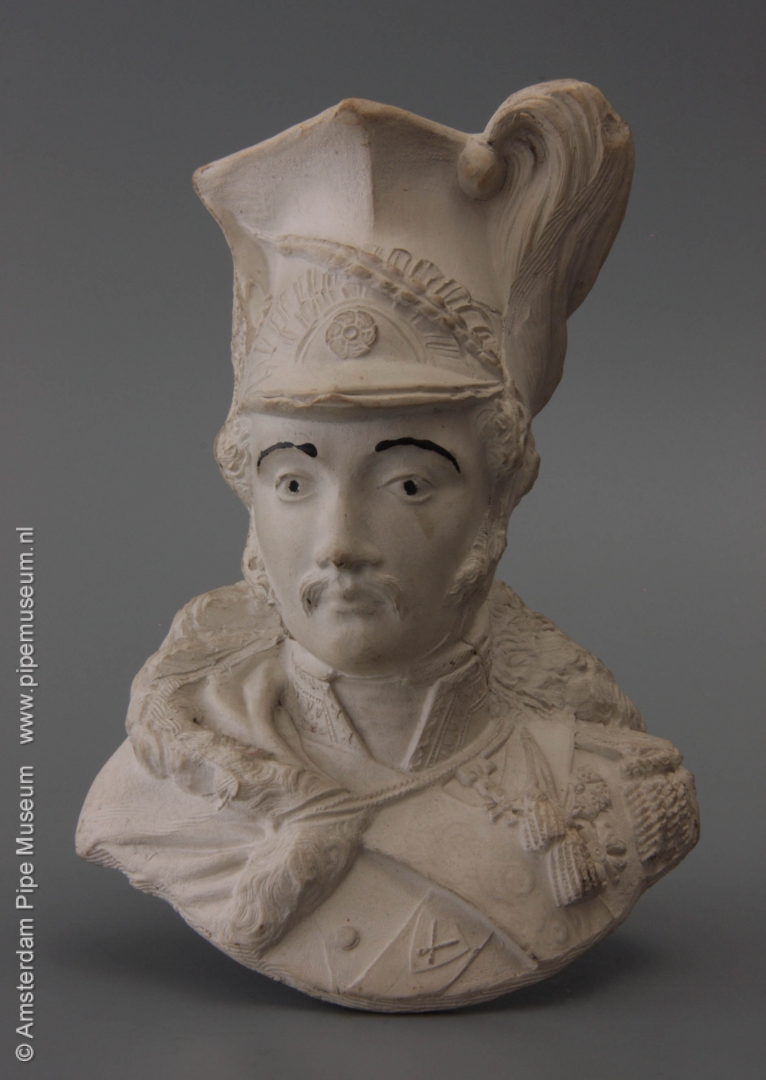
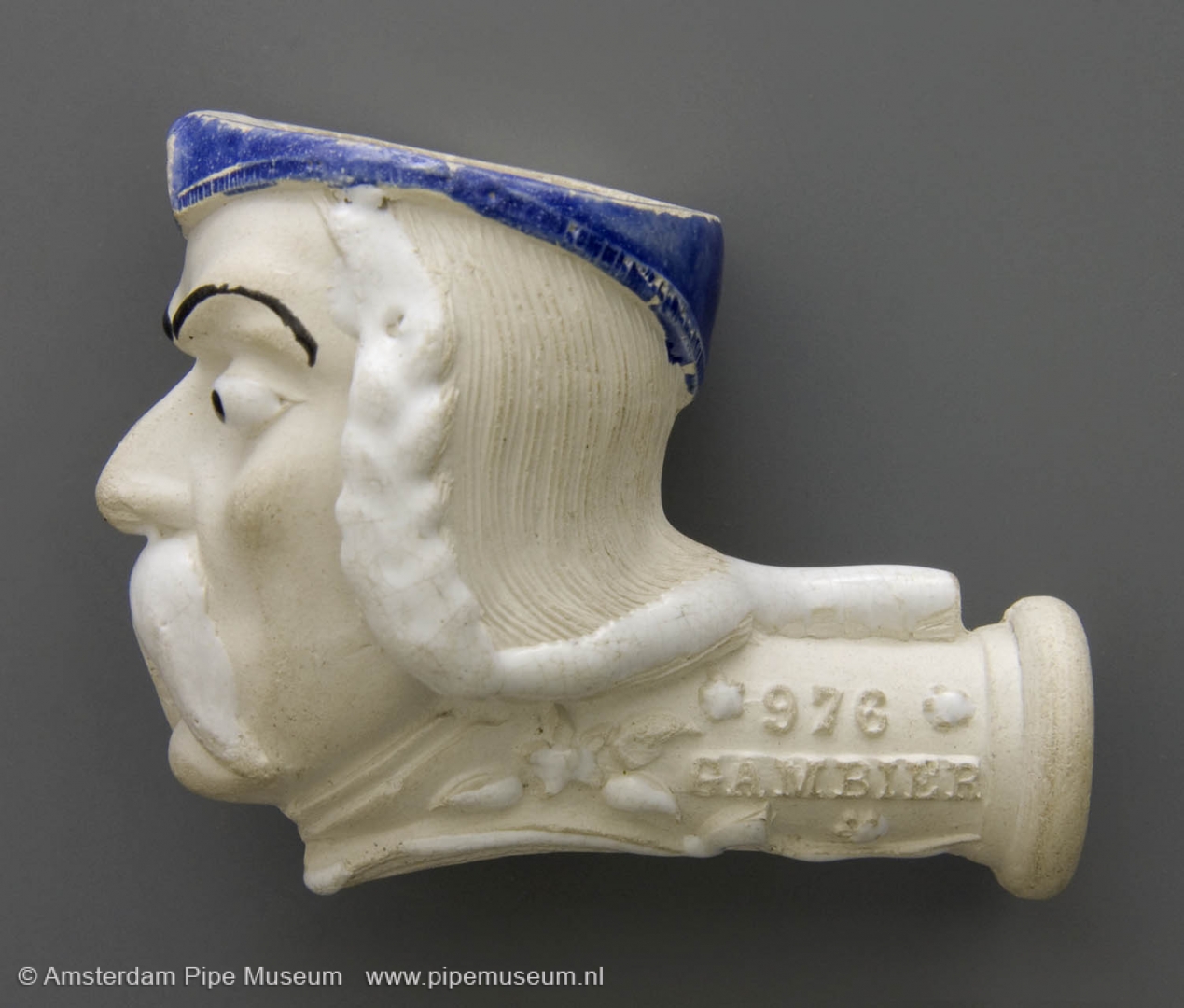
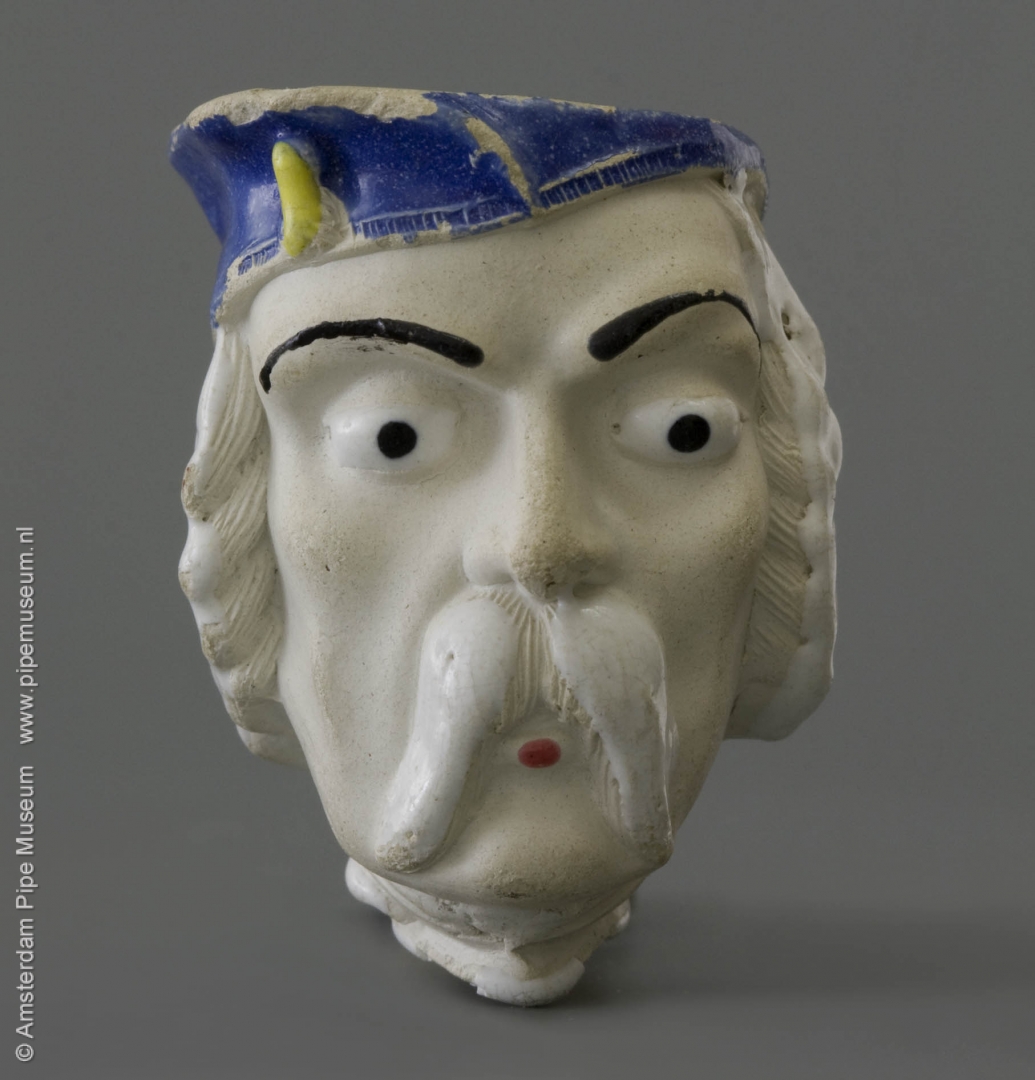
Symbols from the Napoleonic era could also be depicted in a different way. The eagle is such a recognizable sign. On the clay pipe it is placed at the front of the pipe bowl, sitting with spread wings on the well-known two-sided stitch (Fig. 9), the globe (Fig. 10) or with the order of the Légion d'Honneur in its claws (Fig. 11).
From consumer object to collector's item
At the end of the twentieth century, French figural pipes have become a rare and sought-after collector's item. The pipe, with its cultural-historical depiction, offers a time image of one or a century and a half ago in its own unique way. Such pipes are rare because they were ordinary consumer items at the time, which were smoked until they broke through an unexpected movement. However, the production numbers of this figural pipe are remarkable. A calculation has been made of the production of one of the largest pipe factories in Northern France, the Gambier company in Givet. Between 1860 and 1880, around 50 million pipes left the factory every year! The catalog from that time contains approximately 1500 different models, of which (at least) as many press molds were made. In a small town on the Franco-Belgian border, the workers made these numbers of pipes entirely by hand.
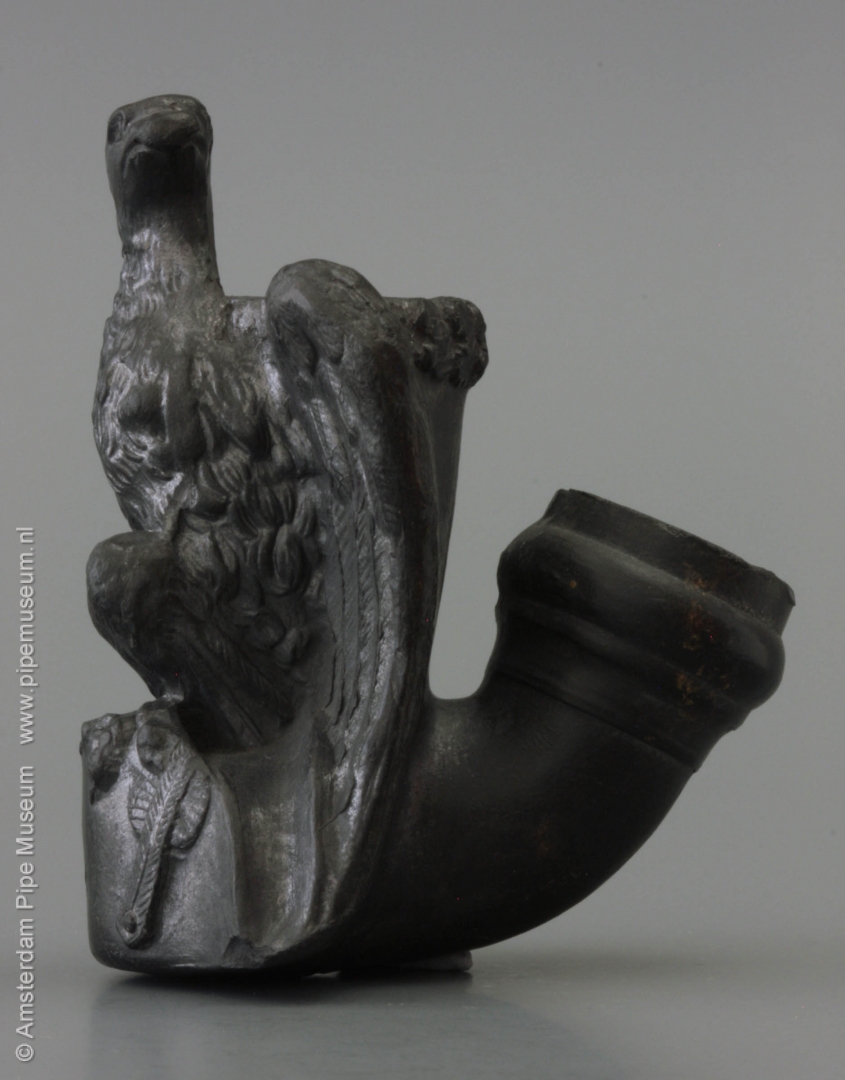
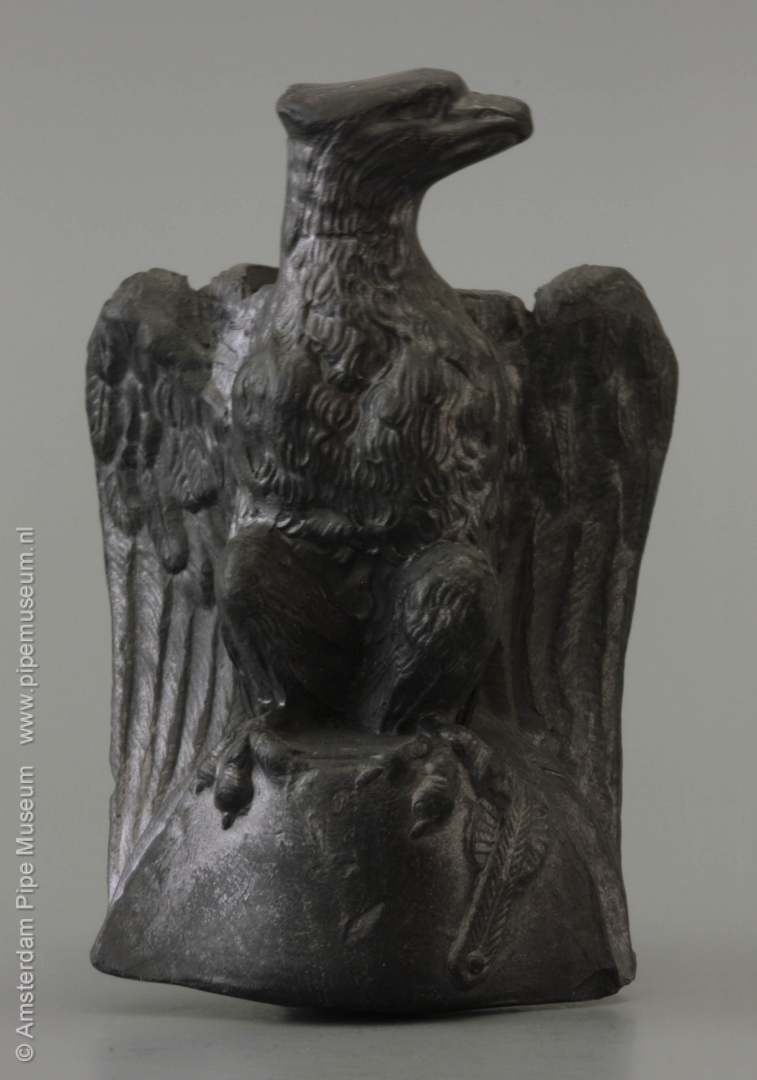

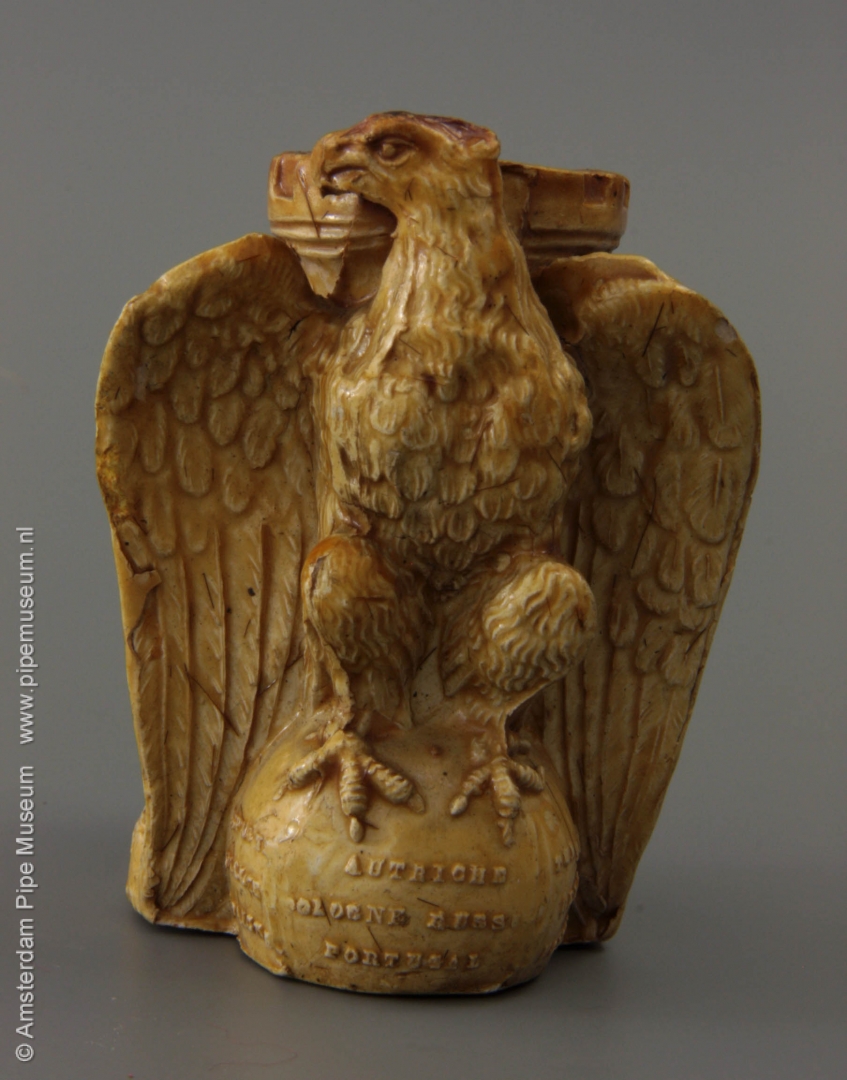
Many pipes were even further treated with lacquer or enamel painting after pressing, drying and firing. For commercial reasons, the pipes were marked Gambier à Paris, where the firm had a trading office. The establishment in Paris allowed to keep in touch with the themes that were popular with the great people, the clientele for these pipes.

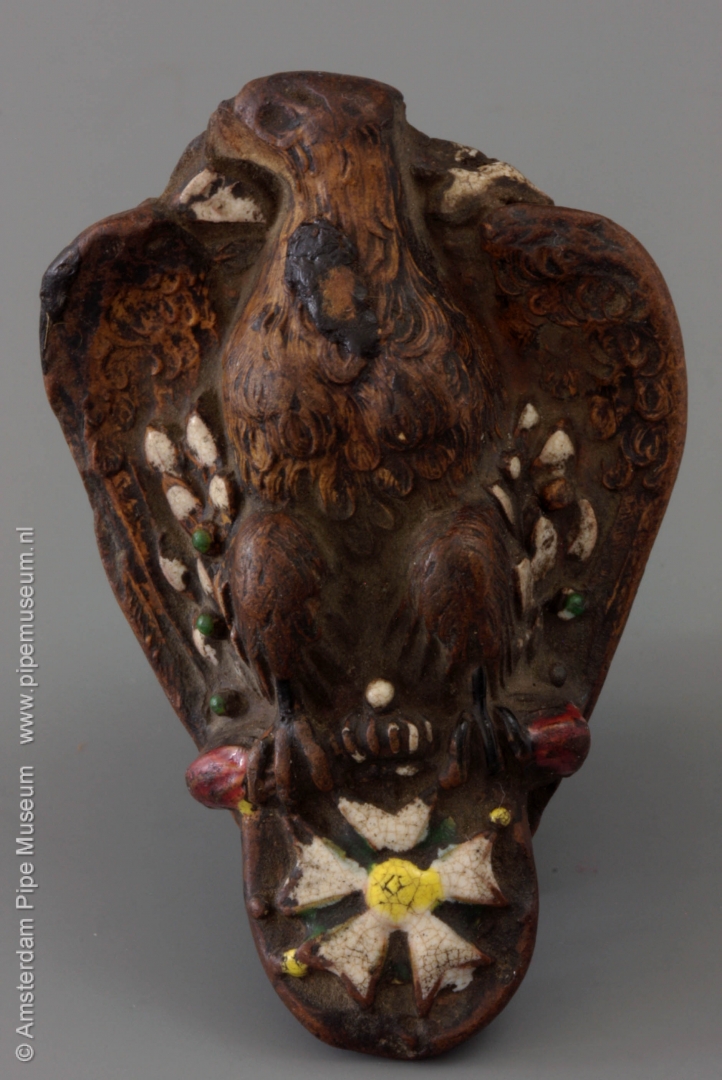
The rare figural clay pipes can now be seen in only a few museums. The tobacco museums in Paris, Bergerac and Vienna, among others, show special examples. The largest collection in public possession can be found in the Pijpenkabinet in Amsterdam, where almost a thousand copies are housed.
© Don Duco, Pijpenkabinet Foundation, Amsterdam, 1999.
Illustrations
- Napoleon aux Alpes, the young general on a victory march. Givet, Firm J. Gambier, shape 834, 1860 – 1885.
Amsterdam, Pijpenkabinet collection Pk 8.533a - Napoleon with the signature two-sided stitch. Givet, Firm J. Gambier, shape 332, 1870 - 1900.
Amsterdam, Pijpenkabinet collection Pk 8.827 - Napoleon Empereur, the imperial portrait in red clay. Paris, Villemus & Bonnet, 1860-1890.
Amsterdam, Pijpenkabinet collection Pk 3.433 - Empress Joséphine de Beauharnais depicted in the pipe bowl. Saint-Omer, Firm E. Duméril, H. Leurs et Cie, 1860 - 1880.
Amsterdam, Pijpenkabinet collection Pk 14.590 - Death portrait of Napoleon, popular as a memorial at his state funeral in 1848. Givet, Firm J. Gambier, shape 850, 1860-1880.
Amsterdam, Pijpenkabinet collection Pk 13.413a - Pipe with clay stem with Napoleon in full length. Givet, Firm J. Gambier, shape 1266, 1870 - 1890
Amsterdam, Pijpenkabinet collection Pk 14.364a - Poniatowski's beautifully detailed portrait pipe. Saint-Omer, Firm L. Fiolet, 1860 – 1890.
Amsterdam, Pijpenkabinet collection Pk 8.341 - Le Grognard, an officer from Napoleon's army. Givet, Firm J. Gambier, shape 976, 1870 – 1900.
Amsterdam, Pijpenkabinet collection Pk 8.753b - Pipe with the imperial eagle on the two-sided stitch. Givet, Blanc-Garin & Guyot, shape 252, 1830 - 1850
Amsterdam, Pijpenkabinet collection Pk 2.143 - Pipe with the imperial eagle on the globe. Givet, Firm J. Gambier, shape 406, 1870 - 1900.
Amsterdam, Pijpenkabinet collection Pk 4.103a - Pipe with the imperial eagle sitting on the decoration of the Légion d’Honneur. Givet, Firm J. Gambier, shape 804, 1860 - 1890.
Amsterdam, Pijpenkabinet collection Pk 11.724